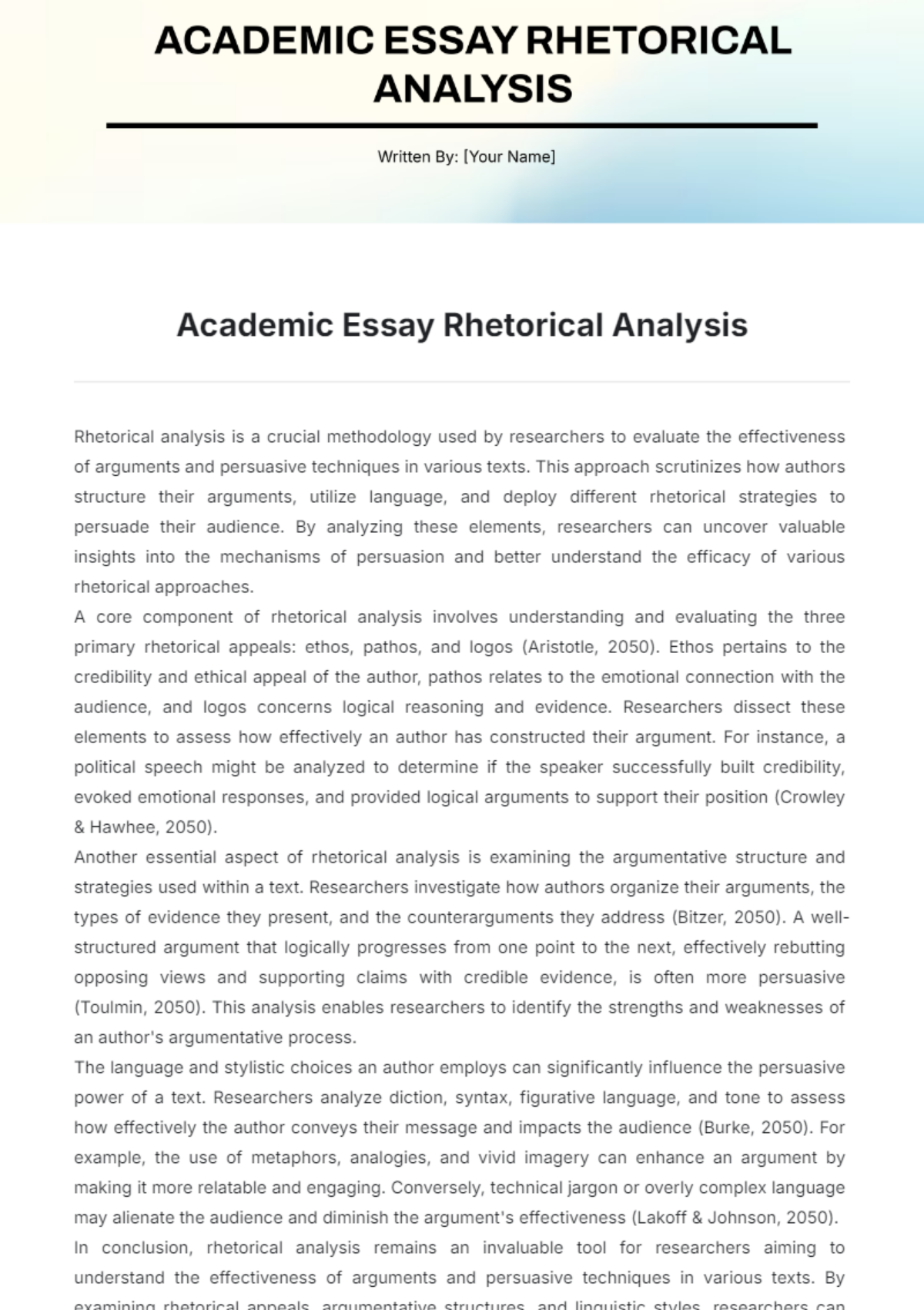Free Gym Competitor Analysis

- 100% Customizable, free editor
- Access 1 Million+ Templates, photo’s & graphics
- Download or share as a template
- Click and replace photos, graphics, text, backgrounds
- Resize, crop, AI write & more
- Access advanced editor
Streamline your market research with Template.net's Gym Competitor Analysis Template. This fully customizable and accessible template, editable in our AI Editor Tool, provides a comprehensive framework for evaluating your competition. Gain valuable insights, make informed decisions, and stay ahead in the fitness industry. Empower your marketing strategy with precision and clarity—try it today!
You may also like
Gym Competitor Analysis
I. Competitor Identification
This section identifies key local competitors in the fitness industry, including established gyms and emerging fitness studios within a 10-mile radius of [Your Company Name].
Competitor Name | Location | Distance from [Your Company Name] |
|---|---|---|
[Competitor 1] | [Competitor 1 Location] | 5 miles |
[Competitor 2] | [Competitor 2 Location] | 8 miles |
[Competitor 3] | [Competitor 3 Location] | 3 miles |
II. Facility and Equipment Comparison
The Facility and Equipment Comparison section provides a detailed analysis of competitor facilities and equipment offerings within the fitness industry landscape. It focuses on key amenities such as cardio equipment, strength training areas, group exercise spaces, and specialized training zones like functional fitness areas or indoor cycling studios. This comparison aims to identify strengths and opportunities for [Your Company Name] to enhance its facility offerings and competitive positioning.
Competitor | Cardio Equipment | Strength Training Areas | Group Exercise Spaces | Specialized Training Zones | Analysis |
|---|---|---|---|---|---|
Competitor 1 | Yes | Yes | No | Indoor Cycling | Competitor 1 offers a robust selection of cardio and strength training equipment but lacks dedicated group exercise spaces. Their focus on indoor cycling could attract enthusiasts. |
Competitor 2 | No | Yes | Yes | Functional Fitness | Competitor 2 excels in strength training and offers group exercise spaces, emphasizing functional fitness areas. Lacks cardio options, which may limit appeal to cardio-focused members. |
Competitor 3 | Yes | No | Yes | None | Competitor 3 provides cardio and group exercise spaces but lacks specialized training zones, potentially missing out on niche fitness markets. |
This analysis underscores opportunities for [Your Company Name] to differentiate itself by expanding cardio offerings, enhancing group exercise facilities, and introducing specialized training zones. By leveraging these insights, [Your Company Name] can strategically enhance its facility to cater to diverse fitness preferences and attract a broader membership base.
III. Membership Pricing and Packages
The Membership Pricing and Packages section conducts a thorough analysis of competitor membership plans, pricing tiers, and promotional offers within the fitness industry. This examination evaluates affordability and value propositions relative to [Your Company Name], aiming to identify competitive advantages and opportunities for pricing strategy enhancement.
Competitor | Pricing Tier | Membership Plan | Promotional Offers | Analysis |
|---|---|---|---|---|
Competitor 1 | Basic: $30/month | Monthly | First month free | Competitor 1 offers a low-cost basic plan with an attractive promotional offer of the first month free, appealing to budget-conscious individuals seeking flexibility. |
Competitor 2 | Standard: $45/month | Monthly, Quarterly | 15% off for students | Competitor 2 provides flexible monthly and quarterly options with a discount incentive for students, targeting both short-term and long-term membership needs. |
Competitor 3 | Premium: $60/month | Monthly, Annual | 2 personal training sessions free | Competitor 3 positions itself with a premium pricing tier that includes valuable personal training sessions, appealing to members seeking personalized fitness guidance. |
This analysis highlights opportunities for [Your Company Name] to refine its membership pricing strategy by considering promotional offers, tiered pricing options, and additional value-added services. By strategically aligning pricing with market demands and member preferences, [Your Company Name] can enhance its competitive edge and attract a diverse membership base.
IV. Programs and Services
The Programs and Services section evaluates competitor fitness offerings, encompassing personal training options, group fitness classes, wellness programs, and additional amenities such as locker rooms, showers, and childcare facilities. This analysis provides insights into the breadth and quality of services provided by competitors relative to [Your Company Name], guiding strategic decisions to enhance service offerings and member satisfaction.
Competitor | Personal Training | Group Fitness Classes | Wellness Programs | Additional Amenities | Analysis |
|---|---|---|---|---|---|
Competitor 1 | Yes | Yes | No | Locker Rooms | Competitor 1 offers essential services including personal training and group fitness classes, with locker rooms to cater to basic member needs. |
Competitor 2 | No | Yes | Yes | Childcare Facilities, Limited Locker Rooms | Competitor 2 distinguishes itself with comprehensive wellness programs and childcare facilities, though locker room services are somewhat limited. |
Competitor 3 | Yes | No | No | Functional Fitness Areas, Locker Rooms | Competitor 3 focuses on personal training and functional fitness areas, complemented by well-maintained locker rooms, lacking specific wellness programs. |
This analysis underscores opportunities for [Your Company Name] to differentiate itself by potentially expanding service offerings, enhancing amenities like locker rooms, and introducing wellness programs or childcare facilities. By aligning services with member needs and industry trends, [Your Company Name] can strengthen its competitive position and elevate member satisfaction.
V. Marketing and Branding Strategies
The Marketing and Branding Strategies section provides an insightful analysis of competitor approaches in branding, online presence, and marketing tactics within the fitness industry. This evaluation encompasses aspects such as social media engagement, email campaigns, participation in community events, and partnerships with local businesses. It aims to uncover strengths and weaknesses in competitor strategies relative to [Your Company Name], guiding effective marketing decisions and enhancing brand visibility.
Competitor | Branding & Online Presence | Marketing Tactics | Analysis |
|---|---|---|---|
Competitor 1 | Strong | Frequent social media posts, email campaigns, local event sponsorships | Competitor 1 demonstrates a robust online presence with strong branding, actively engaging with members through regular social media updates, targeted email campaigns, and community event sponsorships. |
Competitor 2 | Moderate | Occasional social media updates, email newsletters, partnerships with local health food stores | Competitor 2 maintains a moderate online presence, leveraging occasional social media updates and email newsletters. They also collaborate with local health food stores to expand reach within the community. |
Competitor 3 | Weak | Minimal social media engagement, no notable email campaigns, rare community events | Competitor 3 shows weak branding and online presence, lacking significant engagement on social media platforms and missing opportunities for community outreach through events or partnerships. |
This analysis highlights opportunities for [Your Company Name] to strengthen its marketing and branding efforts by adopting a more proactive approach to social media, expanding email marketing initiatives, and forging strategic partnerships with local businesses. By enhancing online visibility and community engagement, [Your Company Name] can effectively differentiate itself in the competitive fitness market and attract a broader audience of health-conscious consumers.
VI. Customer Reviews and Satisfaction
The Customer Reviews and Satisfaction section conducts an in-depth review of customer feedback and online reviews for competing gyms within the fitness industry. This analysis assesses strengths and weaknesses in service delivery, member satisfaction levels, and overall customer experiences. By examining these aspects, this section aims to provide insights into areas where [Your Company Name] can improve service quality and enhance member satisfaction.
Competitor | Customer Feedback and Reviews | Strengths | Weaknesses | Analysis |
|---|---|---|---|---|
Competitor 1 | Generally positive reviews; members appreciate clean facilities and wide range of equipment, but complaints about overcrowding during peak hours. | Clean facilities, wide equipment selection | Overcrowding during peak hours | Competitor 1 maintains positive feedback primarily for cleanliness and equipment diversity, yet faces challenges with peak hour congestion, highlighting a need for capacity management. |
Competitor 2 | Mixed reviews; members value wellness programs and group classes, but note limited cardio equipment and locker room facilities. | Wellness programs, group classes | Limited cardio equipment, inadequate locker rooms | Competitor 2 receives varied feedback, with praise for wellness initiatives and group classes, but faces criticism for insufficient cardio options and locker facilities, suggesting opportunities for equipment expansion. |
Competitor 3 | Mostly negative reviews; issues include outdated equipment and lack of variety in fitness classes, although personal training receives praise. | Personal training | Outdated equipment, limited fitness class variety | Competitor 3 struggles with negative reviews related to outdated equipment and limited class diversity, despite positive feedback on personal training services, indicating a need for equipment upgrades and program diversification. |
This analysis provides actionable insights for [Your Company Name] to enhance service delivery, manage facility capacities during peak times, expand equipment offerings, and diversify fitness programs. By addressing these areas, [Your Company Name] can elevate member satisfaction and strengthen its competitive position in the fitness market.
VII. Strategic Recommendations
These strategic recommendations are designed to position [Your Company Name] as a leader in the fitness industry, enhancing member satisfaction, attracting new clientele, and fostering long-term loyalty through comprehensive service offerings and effective marketing initiatives.
Recommendation | Details |
|---|---|
Revise membership pricing to introduce competitive tiers, offering discounts for long-term commitments. | Analyze current pricing models and competitor offerings. Introduce tiered membership plans (e.g., Basic, Standard, Premium) with flexible pricing options (monthly, quarterly, annual) and incentives (discounts for longer commitments) to attract diverse member demographics and improve retention rates. |
Enhance facility amenities, adding specialized training zones and upgrading existing equipment. | Conduct a facility audit to identify areas for improvement. Invest in specialized training areas (e.g., functional fitness zones, indoor cycling studios) and upgrade existing equipment to enhance member experience and cater to evolving fitness trends. |
Implement targeted marketing campaigns focusing on social media engagement and partnerships with local businesses. | Develop a comprehensive marketing strategy emphasizing social media platforms (Facebook, Instagram) to increase brand visibility and engagement. Forge strategic partnerships with local businesses (health food stores, wellness centers) to expand reach and attract new members through joint promotions and community events. |
Introduce wellness programs and additional amenities such as childcare facilities to increase member satisfaction. | Launch wellness initiatives (nutrition workshops, mindfulness classes) to support holistic member health. Consider adding childcare facilities to appeal to family-oriented members, enhancing convenience and encouraging longer gym visits. |
Create a strong online presence with regular updates, engaging content, and responsive customer service. | Enhance website functionality and content to reflect current offerings and member testimonials. Maintain active social media presence with regular updates, engaging content (fitness tips, member spotlights), and prompt responses to member inquiries to foster community and strengthen brand loyalty. |
Conduct member surveys and feedback sessions to gauge satisfaction and identify areas for improvement. | Implement regular surveys and feedback sessions to gather insights on member experiences, preferences, and suggestions. Use collected data to make informed decisions regarding facility improvements, program enhancements, and customer service initiatives tailored to meet member needs. |
Invest in staff training programs to ensure consistent service delivery and uphold brand standards. | Develop training modules covering customer service, equipment operation, and safety protocols. Provide ongoing professional development opportunities to empower staff with knowledge and skills essential for delivering exceptional member experiences. |
VIII. Conclusion
The comprehensive analysis of competitor strategies and market dynamics has provided valuable insights into key areas where [Your Company Name] can strengthen its position in the competitive fitness industry. By implementing the strategic recommendations outlined above, [Your Company Name] can effectively differentiate itself and enhance its competitive edge.
These recommendations focus on revising membership pricing structures to appeal to a wider demographic, enhancing facility amenities to meet evolving member needs, and implementing targeted marketing campaigns to increase brand visibility and community engagement. Introducing wellness programs and childcare facilities will further elevate member satisfaction, while a robust online presence with engaging content and responsive customer service will solidify [Your Company Name]'s brand presence in the digital landscape.
Moreover, ongoing member feedback and staff training initiatives will ensure continuous improvement in service delivery and uphold high standards of customer experience. By aligning these strategies with market demands and member expectations, [Your Company Name] is poised to achieve sustainable growth and maintain a strong market position in the fitness industry.
This strategic approach not only addresses current market challenges but also positions [Your Company Name] for long-term success by fostering a loyal and engaged member community.





























